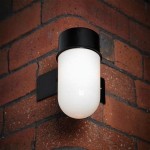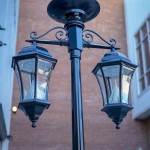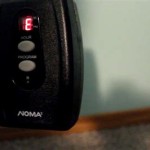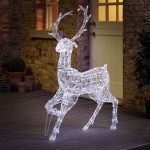How Many Lumens Needed For Outdoor Light?
Outdoor lighting plays a crucial role in enhancing safety, security, and aesthetics. Whether illuminating pathways, highlighting architectural features, or providing ambient light for outdoor gatherings, selecting the right amount of lumens is essential for achieving desired results. Lumens, a unit of measurement for luminous flux, indicate the total amount of light emitted by a light source. Understanding the factors influencing lumen requirements allows for informed decisions when choosing outdoor lighting fixtures.
Factors Determining Lumen Requirements
Several factors contribute to determining the appropriate lumen output for outdoor lighting. These factors include:
1. Purpose of Lighting
The primary purpose of outdoor lighting dictates lumen requirements. For instance, security lighting demands higher lumen output than decorative lighting. Security lighting aims to deter crime by illuminating areas effectively, requiring powerful lights with a wide beam angle. Conversely, decorative lighting focuses on enhancing aesthetics, often employing low-lumen fixtures to create ambiance.
2. Size and Shape of the Area
The size and shape of the area to be illuminated directly influence lumen requirements. Larger areas naturally necessitate higher lumen output to achieve adequate illumination levels. Similarly, the shape of the area, such as a long driveway or a narrow walkway, influences the distribution of light. Narrow spaces may require concentrated light sources with higher lumen output, while wider areas benefit from more diffused light sources with lower lumen output.
3. Distance from the Light Source
The distance between the light source and the illuminated area significantly impacts lumen requirements. As the distance increases, so does the intensity of light needed to maintain adequate illumination. The inverse square law explains this relationship, stating that light intensity decreases proportionally to the square of the distance from the light source. Therefore, areas further from the light source require higher lumen output than those closer to the source.
4. Ambient Light
Ambient light levels also play a role in determining lumen requirements. Areas with higher ambient light levels, such as streetlights or moonlit nights, may require less supplemental lighting than areas with low ambient light levels. In such instances, choosing fixtures with lower lumen output can be sufficient to provide adequate illumination without creating excessive glare or light pollution.
5. Light Color Temperature
Light color temperature, measured in Kelvin (K), affects the perceived brightness of light. Warm white light with lower Kelvin values (around 2700K) appears softer and less intense than cool white light with higher Kelvin values (around 6500K). When selecting outdoor lighting, considering the desired ambiance and color temperature is crucial. Warmer colors are often used for decorative lighting, while cooler colors are preferred for security and task lighting.
Recommended Lumen Ranges for Common Outdoor Lighting Applications
Based on the factors mentioned above, here are some recommended lumen ranges for common outdoor lighting applications:
1. Pathway Lighting
For illuminating pathways and sidewalks, a lumen range of 500-1000 per fixture is generally recommended. This provides adequate visibility for safe foot traffic without creating excessive glare.
2. Security Lighting
Security lighting requires higher lumen output, typically around 1500-3000 per fixture, depending on the size of the area and the desired illumination intensity. This ensures clear visibility and acts as a deterrent against potential threats.
3. Landscape Lighting
Landscape lighting aims to highlight specific features, such as trees, shrubs, and water features. Lumen requirements vary depending on the size and distance of the features being illuminated. Fixtures with lumen outputs ranging from 200-500 per fixture are often suitable for this application.
4. Accent Lighting
Accent lighting focuses on highlighting architectural elements, such as building facades or sculptures. This application typically uses fixtures with lower lumen output, ranging from 100-300 per fixture, to create subtle illumination effects.
Conclusion
Determining the appropriate lumen output for outdoor lighting is crucial for achieving the desired lighting effects and ensuring safety and security. By considering factors including the purpose of lighting, area size, distance from the light source, ambient light levels, and light color temperature, individuals can make informed decisions and select fixtures that meet specific needs.

How Many Lumens Outdoor Landscape Lights Need To Work Well

How Many Lumens Do You Need For Outdoor Lighting

How Many Lumens Do You Need For Outdoor Lighting

Led Flood Lights What You Need To Know

How Many Lumens Do You Need For Outdoor Lighting Villaneri

Everything To Know About Bulbs For Landscape Lighting

How Many Lumens Are Needed For Outdoor Lighting The Home Depot

How Many Lumens For An Outdoor Light Fixture On Wall The Fancy Place

How Many Lumens Do I Need For Outdoor Lighting 2024 Guide

How Many Lumens Do I Need For Outdoor Lighting Easy Guide







